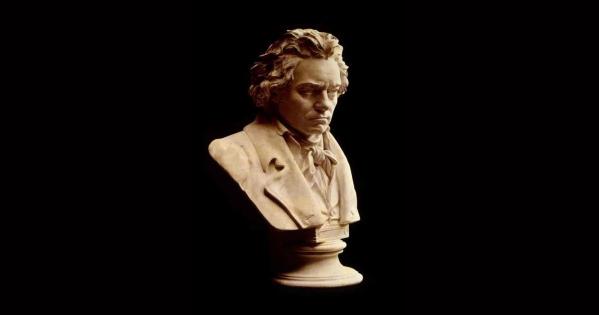Beethoven: Master of Piano Sonatas

Welcome to Feature Fridays! Each week, Music Library staff highlight an item from our collection. This week, student assistant Emily Brignand reviews Piano sonatas Beethoven.
Although Beethoven was born into a musical family, his father was a court musician and grandfather a court music director, he was not a child prodigy. Still, Beethoven underwent harsh, disciplinary music lessons taught by his father, in hopes of raising another Mozart.
Beethoven grew up in an abusive household; a challenging environment that demanded him to leave school and be the family’s breadwinner at a young age. His career did not kick off until his first publication and appointment as a continuo player at the Bonn opera. This led to his short visit and eventual mentorship under Mozart before coming home after receiving the news about his mother’s death. After many compositions and performances, Beethoven accepted an offer to study under Haydn and left Bonn. He brought many innovative musical elements featured in his later pieces, including dynamic outbursts and nontraditional musical forms.
Inspired by the classical period’s music forms, the romantic builds off traditional elements but moves into more expressive and complex music that breaks tradition. The underlying shift from the classical to the romantic era is the focus on the human condition and the indication of struggling spirits. Beethoven’s background and development exemplify the period’s transitions as his music started stretching limits of forms and melodic lines. Drawing from his adversities and growing health problems, Beethoven’s music had much more drama and sometimes even anger as it progressed.
Beethoven is seen as a revolutionary figure not only because of his distinctive, exceptional work but, more importantly, because his work was the first to take on Romanticism in the musical world through his innovative structure with emphasis on emotion and passion through his composition and performance. Before Beethoven, western music focused much more on God or the public and what they wanted to hear. However, Beethoven centered his music on the human experience, tragic and comedic. There became less attention to traditional music structures when Beethoven and many other composers began to break the rules, or not utilize them just for the sake of tradition.
In all three piano sonatas on Disc 288 in the Music Library – No.21 in C, Opus 53 “Waldstein,” No.14 in C sharp minor, Opus 27, No.2 “Moonlight,” and No.8 in C minor, Opus 13 “Pathetique” – Beethoven demonstrates his unique style of drama and expression that helped to popularize his and future composers’ work. Although Beethoven was not the first composer to write piano sonatas, his harmonic and structural innovation through his emotion and expression in single-instrument pieces set the bar for composers after him. With pianoforte already being the main keyboard instrument during his time, shifting away from the monotonous harpsichord that limited players’ volume and expression, he was able to utilize a wide range of keys and moods to move his compositions in a more expressive direction. Beethoven brought forth dramatic changes in the sonata genre using both the advancement of instrumentation and his personal experience and emotions.
Through Beethoven’s innovation, sonatas were not only pieces for students to practice but also appeared and rose in public performances; piano sonatas became technically and emotionally challenging. Beethoven’s highlight of solo performance and incorporation of individualism parallels the historical context in which romanticism emphasized the individual and the imaginative, the personal and the emotional. To experience the monumental sonatas mentioned, check out Piano sonatas Beethoven in the Music Library today!
Piano sonatas Beethoven is available the American University Music Library. We also have other exceptional work Beethoven, including Symphony No.7 and No.2, Concerto per Piano No.5, and more.
